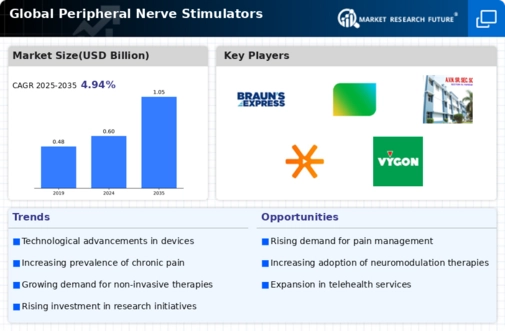Market Trends
Key Emerging Trends in the Peripheral Nerve Stimulators Market
Advancements in pain management technology are poised to propel the growth of peripheral nerve stimulators, with manufacturers continually improving their products. An illustrative example is NeuraLace Medical in the US, which, in June 2022, secured approval for new codes from the American Medical Association for Transcutaneous Magnetic Nerve Stimulation therapy. This therapy is beneficial for doctors treating patients with chronic neuropathic pain, and the approval is expected to boost sales and enhance market share in the long term.
Peripheral nerve stimulators stand out by targeting pain precisely where it's needed, in contrast to medications that affect the entire body, potentially causing side effects like constipation and sleepiness. The therapy delivered by peripheral nerve stimulation minimizes these side effects associated with medications. Users of peripheral nerve stimulation and spinal cord stimulation often experience a reduction in the need for pain relief medications. Consequently, the anticipated advancements in peripheral nerve stimulators are poised to create substantial growth opportunities for the market.
Manufacturers are actively focused on elevating the capabilities of peripheral nerve stimulators, ensuring effective pain relief with minimal side effects. This dedication to improvement and innovation in pain management technology is a driving factor behind the expected growth in the peripheral nerve stimulator market. As these devices evolve to become more advanced and tailored to specific therapeutic needs, their adoption is likely to rise, benefiting both patients and the overall market. The ongoing endeavors to refine and broaden the applications of peripheral nerve stimulators highlight the positive trajectory anticipated in this field.
In conclusion, the continuous evolution of peripheral nerve stimulators reflects a commitment to addressing pain management challenges with increasingly sophisticated solutions. These advancements promise not only enhanced therapeutic benefits for patients but also sustained growth in the peripheral nerve stimulator market. As the industry responds to the evolving needs of patients and healthcare providers, peripheral nerve stimulators are positioned to play a pivotal role in shaping the future landscape of pain management.








Leave a Comment